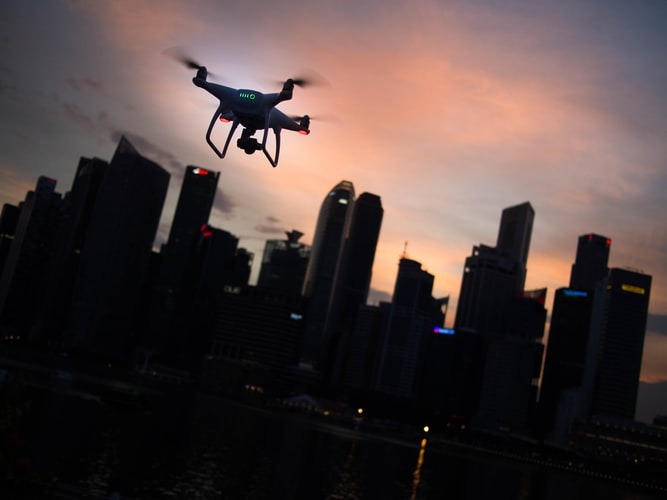At the present time, you would often see a drone flying around an area every once in a while, and this sight is starting to become frequent as drones are becoming abundant almost everywhere in the United States. Because of the rising numbers of drones being flown at every minute or hour, the FAA (Federal Aviation Administration) had established rules that set where drones are prohibited from flying in terms of location and altitude.
Recently, the FAA submitted a proposal which states that drones need to be registered on the remote ID system in the near future. The remote ID for each drone enables the FAA to monitor or track the drone’s movement via the internet. But there are a lot more things going on in this proposal that cannot be explained in just one or two sentences. Here are the essential things that the FAA mentioned in their proposal.
The Remote ID System
The FAA states that drones that are heavier than 0.55 pounds are required to be registered on the remote ID system that will be set up by the administration. As drones are now considered as vehicles that can be fully integrated on the NAS (National Airspace System), the FAA would also like to track the movements of drones similar to how they monitor the flight of airplanes or helicopters.
In registering the drone on the remote ID system, the FAA would like to know the identity of the pilot, the drone model, the location where the drone is flying, and also the altitude of the drone’s flight. The information mentioned will allow the FAA to pinpoint the area where the drone is immediately in case there is an accident in the region.
On the other hand, the FAA already implemented the FAA Reauthorization Act of 2018, which demands pilots to register their drones on the FAA system if they are going to use it for recreational purposes. Once they have fully registered a drone on the system, they would then have to indicate the drone’s registration number on its body by engraving it, putting a permanent label on it, or using a marker to write the number. The FAA seeks to enhance this system further by being able to detect the drone’s location using its registration number.
As also mentioned in the FAA Reauthorization Act of 2018, drones are only allowed to fly in an area below or at 400 feet above the ground, as the altitude higher than that should belong to other aircraft. Those who will violate the law may risk the lives of many by flying the drone recklessly at an altitude higher than 400 feet, as the drone may collide with another aircraft or may disrupt the flight of planes.
In addition, drones are also prohibited from flying in restricted areas indicated on the FAA’s interactive map. FAA trusts pilots that they know the locations where they cannot fly their drones. Besides the restricted areas pointed by the map, the FAA also forbids recreational drone pilots to fly their drones in a location where there are full of people like in stadiums, parks, or big events. Those who will disregard these rules will be liable for criminal and civil penalties by the government of the United States.
Connecting the Drone via the Internet
The administration proposed an idea that all medium to large-sized drones must be connected on the internet so that the FAA will be able to know their real-time location every time that they are flying. Of course, almost all drones today do not have a feature that enables them to be connected to the internet, so the proposal may likely not turn into a law or a working system in five to ten years. However, the FAA will encourage drone companies to install an internet-connecting feature on their drones once the proposal is at its strategizing stage.
For pilots who are wondering how they are going to connect their drones on the internet, if they are flying the aircraft in a remote area, FAA stated that the drone should be able to access radio frequencies to send tracking data to the system. If this is also not possible, the administration suggested that the pilot should register his or her position and also the area where the drone is flying on the internet before starting the flight or even before going to the remote area.
On March 2, 2020, the FAA will open a public forum where interested parties and individuals may comment on the administration’s Remote ID Notice of Proposed Rulemaking (NPRM), although the proposal is currently available for feedback and review on the Federal Register website. If you agree or disagree with the FAA’s proposal, then you may participate in the discussions before they can fully implement it and turn it into regulation or law.
